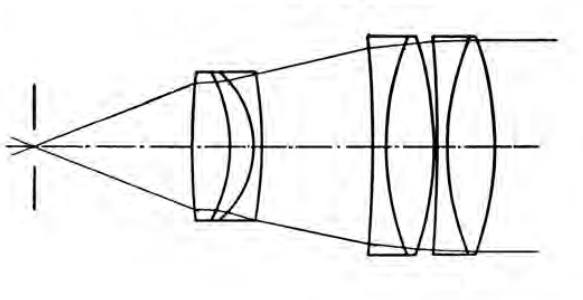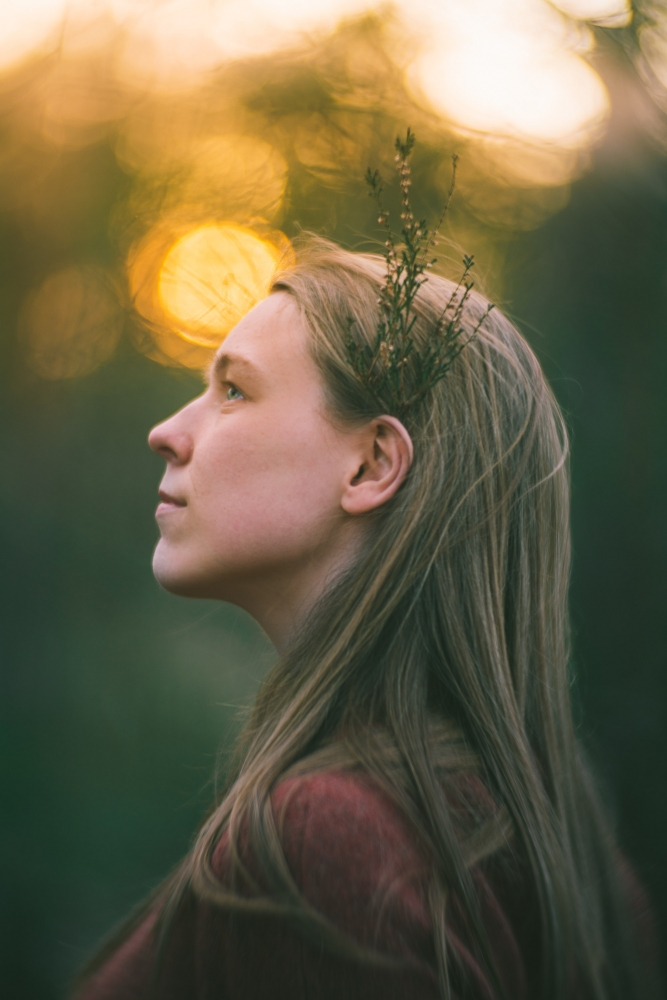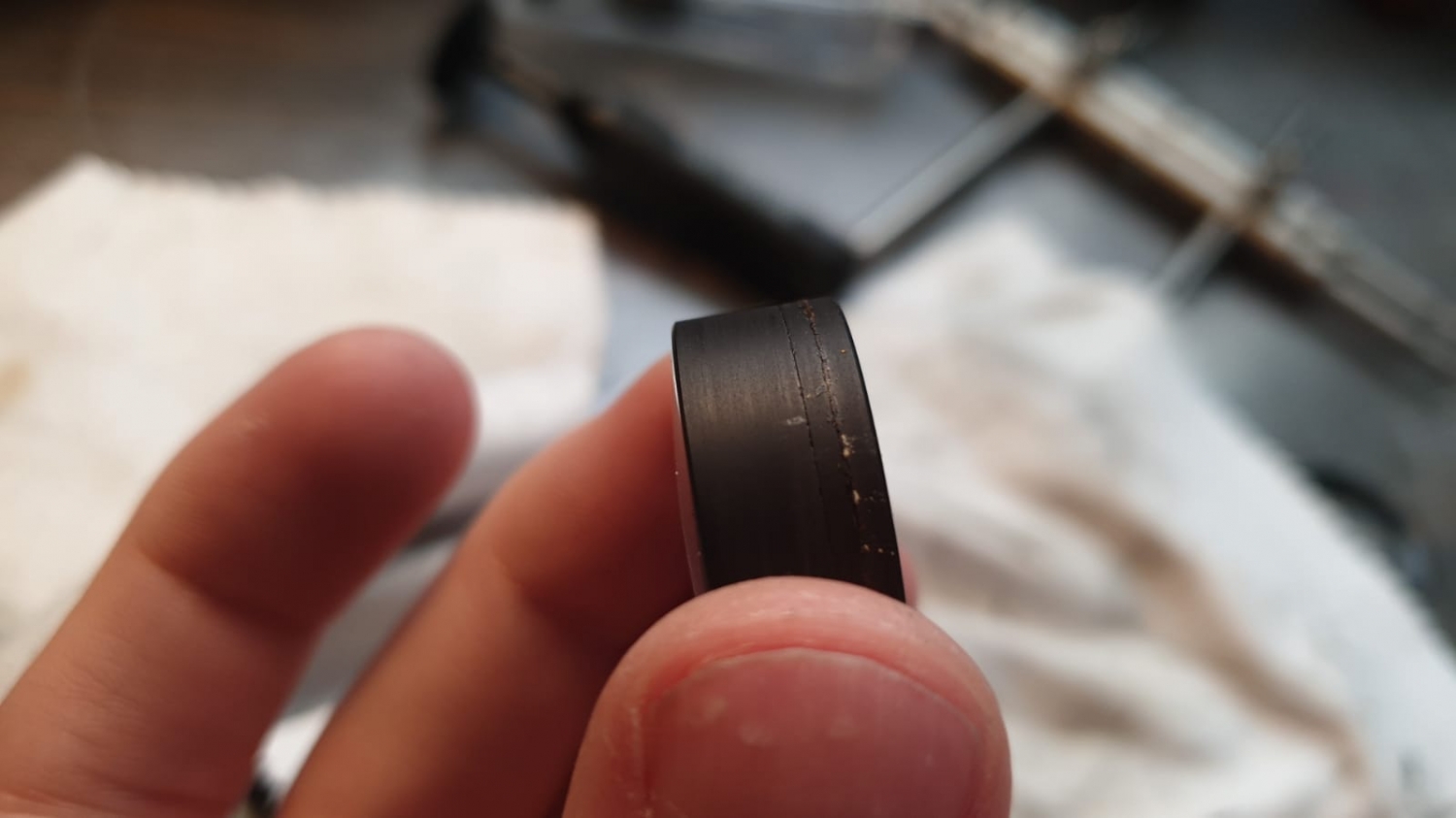| View previous topic :: View next topic |
| Author |
Message |
ostenespen
Joined: 18 Feb 2022
Posts: 8
|
 Posted: Fri Apr 29, 2022 7:39 am Post subject: Astro-Kino VII 100mm f/1.4 – Adaption Posted: Fri Apr 29, 2022 7:39 am Post subject: Astro-Kino VII 100mm f/1.4 – Adaption |
 |
|
ostenespen wrote:
Hello, I wanted to share my findings and experiences with this very rare lens:
This all brass Astro-Kino VII 100mm f/1.4 was made most likely in the period 1933-1935 by the Astro-Berlin company. What it was originally meant for I don't know yet, but the later versions of this lens (which have a barrel diameter of 62.5mm) where specially fitted the Siemens Großraum II-Projektor, which is a high powered 16mm projector for large scale projections. This early version I have has a barrel diameter of 80mm, which does not fit this 16mm projector. What I find strange is this lens covers 6x6 cm format, which is insane for a 16mm projection lens. In the book Manfred von Ardenne: eine Anthologie: Auswahl-Dokumentation historischer Fachartikel 1925-1938 I found a reference to an Astro-Kino f/1.4 lens from the period 1933 in the Institut für Schwingungsforschung, this time used for scientific purposes. If anyone here have any information or theories of what projector would have fitted a projection lens with a barrel diameter of 80mm I'd love to hear them.
The Astro-Kino VII series has a pre-war German patented (D.R.P.) design, invented by the co-founder, astronomer and writer Hugh Ivan Gramatzki. It features 7 elements in 3 groups. The actual patents I have not yet found, only very similar ones from 1933 (D.R.P. pat. 535 883 and pat. 552 789). The optical design drawings came from a Siemens sales brochure from the 1930s. The Astro-Kino VII is completely different optically to the later made post-war East-German Astro-Kino-Color IV, which was fitted to the popular Siemens 2000, which follows a more conventional 16mm projection lens optical design; 2 groups, 4 elements.
The pre-war Astro-Kino VII series came in these sizes:
35/50/65/85/100/120
All with the same f-stop of f/1.4, the 120mm might have been f/1.8. Though it's next to impossible to find any information regarding the 120mm lens.
I have used a couple of months to both do research on this lens and adapt it non-destructively to my Sony E-mount camera. With a back focal distance of 52mm, there's plenty of room to adapt it. The adapter consist of a aluminium base for strength, all normal adaption parts from eBay, clamp, step up ring, M58 focusing helicoid, M58 extension tube and M58 to E-mount reverse mount. To make it a bit unique I designed some lightweight 3D printed parts. The focus ring is also custom, made to look like post-war Astro-Berlin focus ring design. I also bought some old fashioned wrinkle paint, which gives an interesting finish. I got in touch with RafCamera for him to make me a 78-82x0.75mm step up ring especially for this lens, because apparently lenses don't come often with 78mm filter threads.
The optical quality is pretty good for such an old uncoated light sensitive projection lens. It doesn't handle lens flares at all of course. It is far from the most sharpest projection lens I own. On full frame it doesn't vignette at all, due to the large image circle. Chromatic aberration is really low for this kind of lens. The bokeh is swirls even on full frame, so it will be interesting to test it out on medium format.


The optical design of the Astro-Kino VII 100mm f/1.4:

Some images taken with the lens:





 |
|
| Back to top |
|
 |
RokkorDoctor


Joined: 27 Nov 2021
Posts: 1268
Location: Kent, UK
|
 Posted: Fri Apr 29, 2022 8:00 am Post subject: Posted: Fri Apr 29, 2022 8:00 am Post subject: |
 |
|
RokkorDoctor wrote:

From the good old days when ornamental design still applied to things very few people would ever see...
I bet you'll get a few looks when you take that out in public! 
Could this large field coverage for this 16mm projector lens perhaps been to allow for a shift arrangement to prevent key-stoning of the projected image?
_________________
Mark
SONY A7S, A7RII + dust-sealed modded Novoflex/Fotodiox/Rayqual MD-NEX adapters
Minolta SR-1, SRT-101/303, XD7/XD11, XGM, X700
Bronica SQAi
Ricoh GX100
Minolta majority of all Rokkor SR/AR/MC/MD models made
Sigma 14mm/3.5 for SR mount
Tamron SP 60B 300mm/2.8 (Adaptall)
Samyang T-S 24mm/3.5 (Nikon mount, DIY converted to SR mount)
Schneider-Kreuznach PC-Super-Angulon 28mm/2.8 (SR mount)
Bronica PS 35/40/50/65/80/110/135/150/180/200/250mm |
|
| Back to top |
|
 |
eggplant


Joined: 27 May 2020
Posts: 516
|
 Posted: Fri Apr 29, 2022 1:56 pm Post subject: Re: Astro-Kino VII 100mm f/1.4 – Adaption Posted: Fri Apr 29, 2022 1:56 pm Post subject: Re: Astro-Kino VII 100mm f/1.4 – Adaption |
 |
|
eggplant wrote:
Many questions!
| ostenespen wrote: |
In the book Manfred von Ardenne: eine Anthologie: Auswahl-Dokumentation historischer Fachartikel 1925-1938 I found a reference to an Astro-Kino f/1.4 lens from the period 1933 in the Institut für Schwingungsforschung, this time used for scientific purposes.
|
First, do you have any links to where you found this. But secondly, how did you manage to find this out? What was the process for searching for it?
| ostenespen wrote: |
The optical design drawings came from a Siemens sales brochure from the 1930s. The Astro-Kino VII is completely different optically to the later made post-war East-German Astro-Kino-Color IV, which was fitted to the popular Siemens 2000, which follows a more conventional 16mm projection lens optical design; 2 groups, 4 elements.
|
Could you post a link to where you found this Siemens sales brochure? And any details on the Astro-Kino-Color IV.
| ostenespen wrote: |
The optical quality is pretty good for such an old uncoated light sensitive projection lens. It doesn't handle lens flares at all of course. It is far from the most sharpest projection lens I own. On full frame it doesn't vignette at all, due to the large image circle. Chromatic aberration is really low for this kind of lens. The bokeh is swirls even on full frame, so it will be interesting to test it out on medium format.
|
Bokeh swirls and cats-eye bokeh is evidence of optical vignetting, and you can see both in your full frame photos. Although it's nicely hidden by extending the distance to the trees behind the model, pics 4 and 5 do give hints to it's true performance.
For reference I own a Bell and Howell 4 inch f1.6 Petzval lens made for 16mm film, that can do full frame but a little worse based on the photos you've provided https://flickr.com/photos/stevench0928/16415939430/
Would need to see an infinity shot. Also being slightly faster helps.
Going off your optical diagram, perhaps the difference here compared to a typical 16mm projection Petzval is a larger rear group.
And compared to Petzvals in general, a reduced gap between the front/rear sections.
It would probably work very nicely on GFX!
| ostenespen wrote: |
The optical design of the Astro-Kino VII 100mm f/1.4:

|
That rear group is distinctly what he patented (DE535883C being more accurate).
Translating both patents, the focus is clearly on the rear group design- the front isn't even mentioned once.
All I can say is I wouldn't get too hung up on how they split the front component, you can see plenty of variation here http://forum.mflenses.com/roger-cicala-tests-lomographys-petzval-lens-t67138.html#1397448
After doing a quick patent search:
In Fig. 4 of GB258092A Improvements in lens systems, you can see two doublets used for the front component:

The modifications in all examples allow a claimed f/1.5 aperture. No doubt Gramatzki's modified rear group helped.
The two doublets at the front in your example don't have to be just for aberration correction, but ease of production too.
| Quote: |
Fig. 4 shows a further development which is more advantageous, though more complex, than either of the constructions illustrated in Figs. 2 and 3. In the development of the invention as illustrated in Fig. 4, both the front convergent meniscus members are compound...
...Extended investigations have shown that we may alternatively divide the back convergent member, and compared with division of the front convergent member, this is almost as favourable for reduction of the zonal spherical aberration and slightly more favourable for improvement of the field. |
You can also see many other initially 'simple' variations on the Petzval in there, so is good reading anyway. |
|
| Back to top |
|
 |
RokkorDoctor


Joined: 27 Nov 2021
Posts: 1268
Location: Kent, UK
|
 Posted: Fri Apr 29, 2022 6:27 pm Post subject: Re: Astro-Kino VII 100mm f/1.4 – Adaption Posted: Fri Apr 29, 2022 6:27 pm Post subject: Re: Astro-Kino VII 100mm f/1.4 – Adaption |
 |
|
RokkorDoctor wrote:
| eggplant wrote: |
| Bokeh swirls and cats-eye bokeh is evidence of optical vignetting, and you can see both in your full frame photos. |
In addition to optical vignetting I suspect this lens also has a whopping amount of astigmatism: in image 5 the swirly background bokeh continues well into the middle of the frame.
_________________
Mark
SONY A7S, A7RII + dust-sealed modded Novoflex/Fotodiox/Rayqual MD-NEX adapters
Minolta SR-1, SRT-101/303, XD7/XD11, XGM, X700
Bronica SQAi
Ricoh GX100
Minolta majority of all Rokkor SR/AR/MC/MD models made
Sigma 14mm/3.5 for SR mount
Tamron SP 60B 300mm/2.8 (Adaptall)
Samyang T-S 24mm/3.5 (Nikon mount, DIY converted to SR mount)
Schneider-Kreuznach PC-Super-Angulon 28mm/2.8 (SR mount)
Bronica PS 35/40/50/65/80/110/135/150/180/200/250mm |
|
| Back to top |
|
 |
ostenespen
Joined: 18 Feb 2022
Posts: 8
|
 Posted: Sat Apr 30, 2022 9:15 am Post subject: Re: Astro-Kino VII 100mm f/1.4 – Adaption Posted: Sat Apr 30, 2022 9:15 am Post subject: Re: Astro-Kino VII 100mm f/1.4 – Adaption |
 |
|
ostenespen wrote:
| eggplant wrote: |
Many questions!
First, do you have any links to where you found this. But secondly, how did you manage to find this out? What was the process for searching for it?
|
This is the mention I found, I have not yet found a way to read the whole chapter, I might buy the whole book in a later date to find out if the lens is mentioned further:
https://books.google.no/books?id=X4wfAQAAIAAJ&q=%22astro+kino%22&dq=%22astro+kino%22&hl=en&sa=X&ved=2ahUKEwiIzojVyuD0AhXI-ioKHfdTD6QQ6AF6BAgSEAI
Because there's so little information available I search for any mentions of Astro-Kino before the war in books.google.com.
| eggplant wrote: |
Could you post a link to where you found this Siemens sales brochure? And any details on the Astro-Kino-Color IV.
|
I have these post-war East-German Astro-Kino-Color IV 50/1.4, 50/1.6, 75/1.6 and 85/1.6 and for those I have opened to clean, they are the standard petzval variant you usually see in post-war 16mm projection lenses, with four elements in two groups. These post-war lenses are almost more difficult to find good information on, so it's just from personal observations.
This site have scanned a bunch of documents relating to projectors:
http://olafs-16mm-kino.de/Anleitungen/Siemens%20Fotohaendler%20Info%20optischer%20Aufbau%20Schmalfilmgeraete%201938.pdf
http://www.olafs-16mm-kino.de/siemens.htm
Here you actually have the original price for a Siemens Großraum II-Projektor with a Astro-Kino VII 50mm f/1.4, another lens which I incidentally just got a hold of:
http://www.olafs-16mm-kino.de/Anleitungen/Info%20fuer%20Fotohaendler.pdf

I'm just gonna mention the Astro-Kino VII 50mm f/1.4 has the same glued 3 element back group as the Astro-Kino VII 100mm f/1.4.
Astro-Kino VII 100mm f/1.4 back group:

Astro-Kino VII 50mm f/1.4 back group:

I got sent this image detailing the Astro-Kino VII series by the host of this site:
http://www.exaklaus.de/astro.htm
https://espensusort.no/wp-content/uploads/2021/12/Astrokino.jpg
Roughly translated:
| Quote: |
The special lens for ”Großraumprojektion” (large-format or large-scale projection) of “Schmalfilm” (Directly translated “narrow film”, meaning film smaller than 35mm in size).
Modern projection technology, which strives to achieve large images of the highest brilliance and brightness even with “narrow film” (film smaller than 35mm), also requires a projection lens of the highest performance. Luminous intensity alone is not the decisive factor, although the ASTRO-KINO is also at the forefront in this respect. A main requirement is to produce images of the highest brilliance, i.e. the strongest contrast between highlights and shadows. This is only possible with the aid of a lens in which internal reflection, the so-called “self-luminosity” of the lens, is reduced to a minimum.
This goal is achieved with the ASTRO-KINO. The lens has only 4 or 6 surfaces of air-glass, none of which is a hollow surface. The brilliance of the images projected with the ASTRO-KINO cannot be achieved at such light intensity by any construction with more reflecting surfaces or a hollow surface, since strong internal reflection leads to obscuring of the image. The sharpness of ASTRO-KINO lenses from the center to the edge meets even the highest demands.
The ASTRO-KINO is manufactured in the following focal lengths: 36mm, 52mm, 65mm, 85mm, 100mm and 120mm. Care must be taken that the projector is equipped with an appropriate condenser through which the luminous intensity of the ASTRO-KINO is really utilised. |
|
|
| Back to top |
|
 |
|
|
|
You cannot post new topics in this forum
You cannot reply to topics in this forum
You cannot edit your posts in this forum
You cannot delete your posts in this forum
You cannot vote in polls in this forum
|
